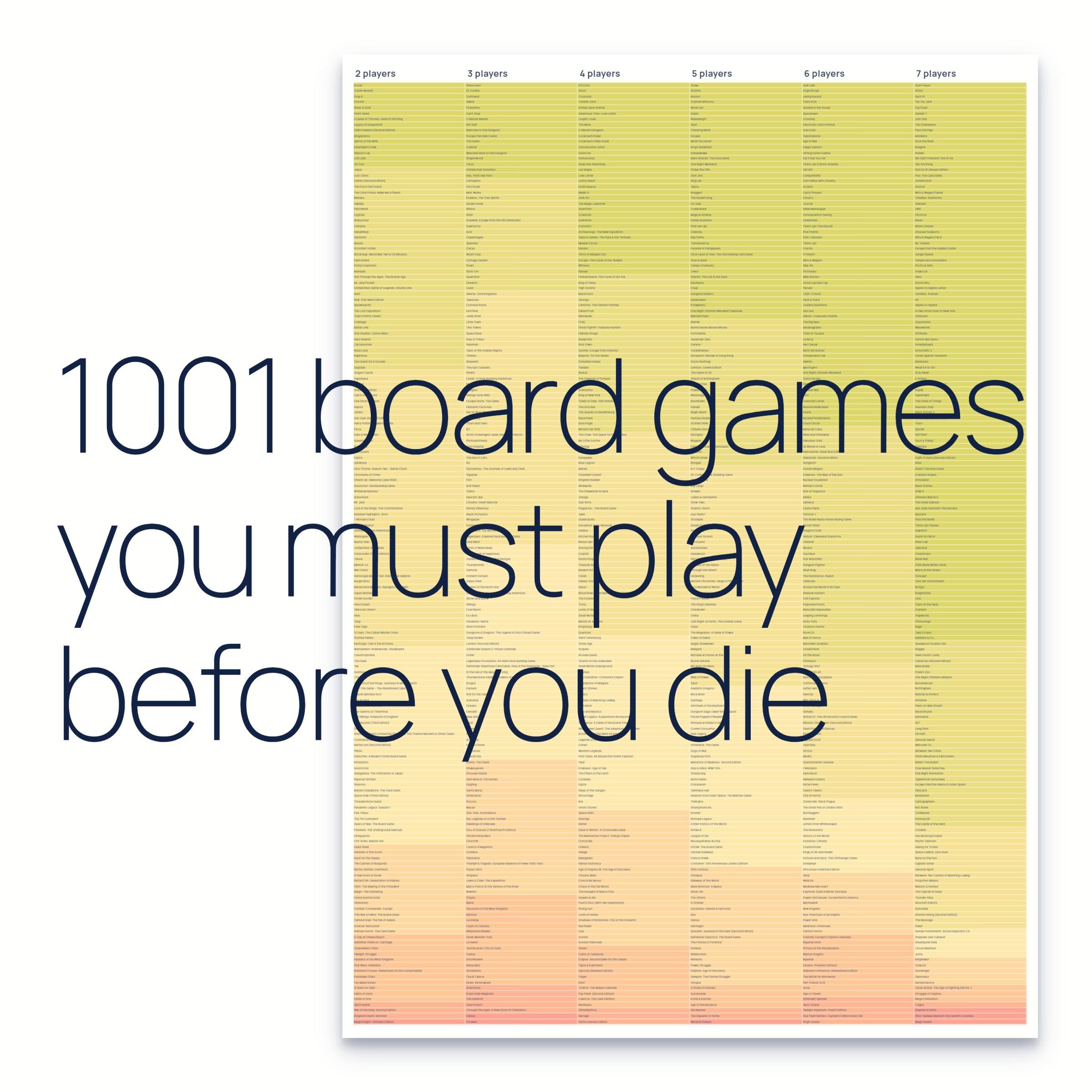
Board games you must play before you die
I have some of those “1001 … you must see before you die” books and felt like this concept could be applied to board games as well. Since I don’t claim to be the ultimate authority on games, I decided to crowdsource and turned to boardgamegeek.com, the biggest board game database online.
How to poster
Step 0: learn a programming language. I know Javascript, so I wrote a bunch of little Node.js scripts for scraping and calculating.
- This initial attempt took the top games from boardgamegeek ranked list (only those with 30+ ratings).
- Rankings were then adjusted for complexity bias.
- After that the player count recommendations were sorted from best to worst.
- Then I filled out the table, trying to put top games in their best column. Had to introduce some bias toward larger player counts, because 7 is an uncommon player count; 6×167=1002 games looks much better on a poster though.
- Finally the columns were sorted and coloured by weight.
The resulting visualization makes it pretty clear that it’s really hard to design a good game that is both complex and playable with many people at the same time.
If I were to make an actual book on this subject, I would definitely add some less highly rated but historically relevant games (Chess, Monopoly, Go), more regional games, and try to account for age bias in general as newer games tend to be more generously rated.
Poster.is-wide
